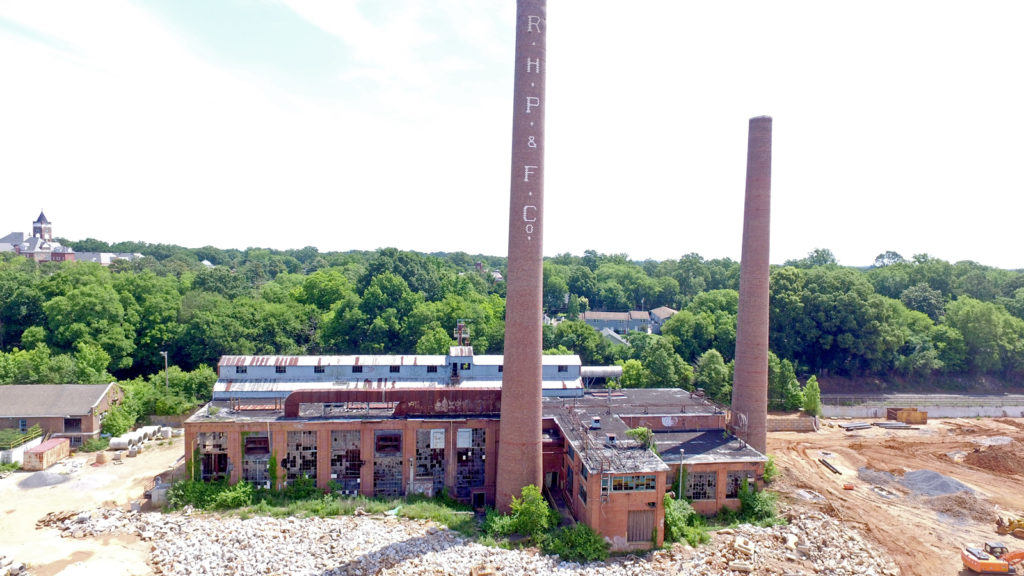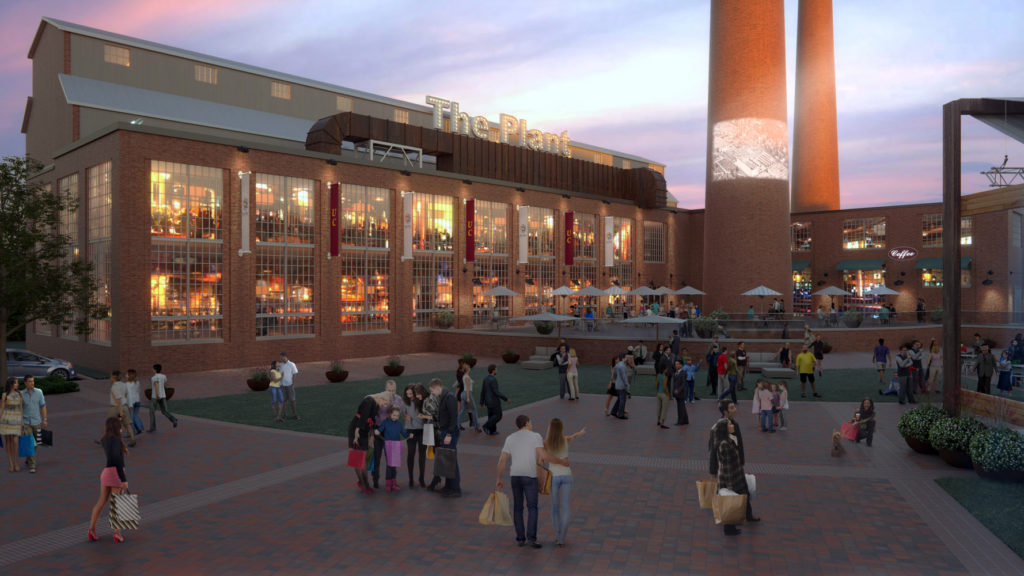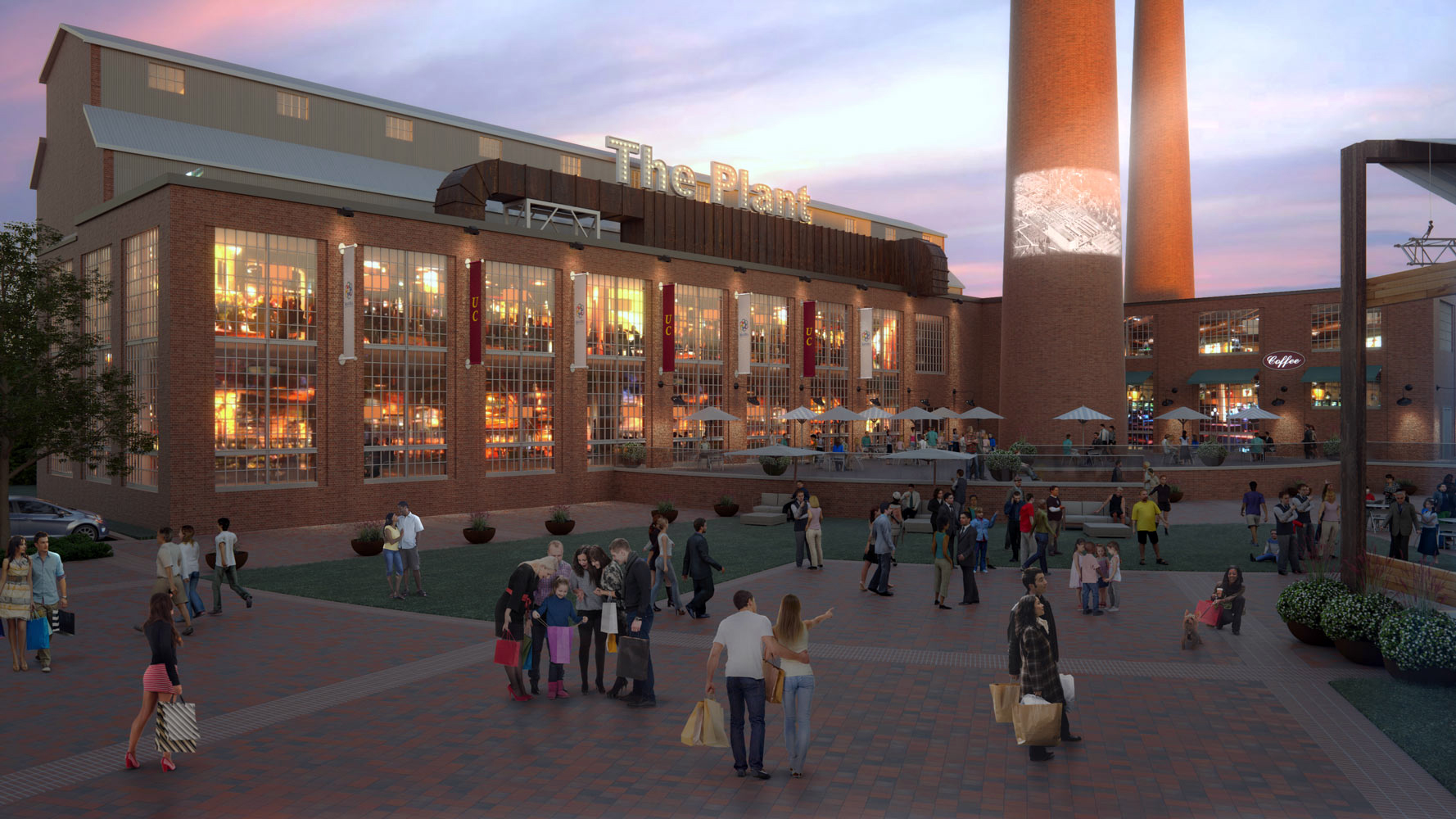Even for those of us far too young to have seen them first hand, black and white images of men and women in grease stained overalls and sooty head scarfs, conjures in our minds the notion of “American Industry.” There is a sort of universal appeal to these icons. They embody many of the best aspects of the American spirit, and remind us that even during challenging times, remarkable things can accomplished. They convey sentiments such as teamwork, respect, and a shared sense of purpose. In much the same way, industrial architecture of the early 20th Century conveys sentiments of fortitude, efficiency, and innovation. A network of fiercely independent companies and facilities, working together to produce the goods needed by an entire nation and beyond.
Nearly every industrial complex from this era had one thing in common: each produced and consumed their own energy entirely. The “Power House” as these facilities were commonly known, were the coal-fired heart of these industrial facilities. In form, they were almost cathedral-like: solid masonry structures, long and slender with vaulted interiors. Where a cathedral’s stained glass windows would depict scenes from the distant past, expansive steel and glass windows reveal a story of productivity being written. Where a bell tower’s tune would be heard far and wide, the smokestack’s plume would be seen for miles, as a testament to the community’s economic vitality.

As the decades stretched on, the power house became less and less a symbol of innovation, and more of a symbol of a bygone era. But like old black and white photos, the stories of the past remain relevant in any era. So what shall we do with these impressive structures that no longer serve a purpose? Very often, the answer is a grim reminder that nothing lasts forever, and that the old must make way for the new. Very few of these structures still remain on the American landscape. But every once in a while, an opportunity comes along for a different sort of innovation and teamwork. A way exists to stitch together the old to the new, forming a bridge between the past and the future.
The rapid growth of the Charlotte metro area has created a housing demand for the booming population of Rock Hill. Within the historic textile mill campus is the newly constructed Rock Hill Sports & Event Center, which draws thousands to the area on a weekly basis. This growth has created a clamoring for more high-quality, local food, beverage, and entrainment options. As this site is also located directly south of Winthrop University, the inherent demand for similar amenities is obvious.

The Power House once served the specific needs of the industrial campus, but clearly those needs have changed greatly. The boilers, turbines, conveyor belts, and coal chutes have not functioned in nearly 40 years and thus, they must go. Once the building has been emptied of the abandoned systems within, the opportunities for new, exciting features are almost limitless. The 16,000 q. ft. main level features a wide ranging set of culinary and entertainment offerings. Multiple restaurant modules, operated by talented, entrepreneurial chefs make for an exciting dining experience for any appetite. Digital sports simulators provide family-friendly, intergenerational entertainment opportunities. Immediately outside the doors are a series of terraced dining and gaming areas, capitalizing on Rock Hill’s mild climate and the desire for open air gathering places. For a more intimate experience, a pair of restaurants are located off the main space in The Turbine Room. These restaurants offer a traditional sit-down arrangement, including access to dedicated outdoor terraces as well. Connecting all of these spaces together is The Lawn – a 300 person, multi-purpose civic space for live performances, community events, and general outdoor enjoyment. Within the upper volumes of the building a wide variety of industrial themed apartment units, ranging in size from extended stay sized studio units to multi-level three bedroom lofts and townhouses. Each apartment is uniquely configured to showcase every character soaked rivet, truss, beam, and brick. All apartments feature the quality and comfort demanded of a newly constructed residence, with the type of character only found within such a rich, historic setting. All told, this project will contain over 64,000 sq. ft. of Class-A real estate. The rehabilitation of this National Register-listed building will ensure that the Power House lives on. It is a testament to the value we hold in our historic places as our communities grow and diversify across the country – communities like Rock Hill.

